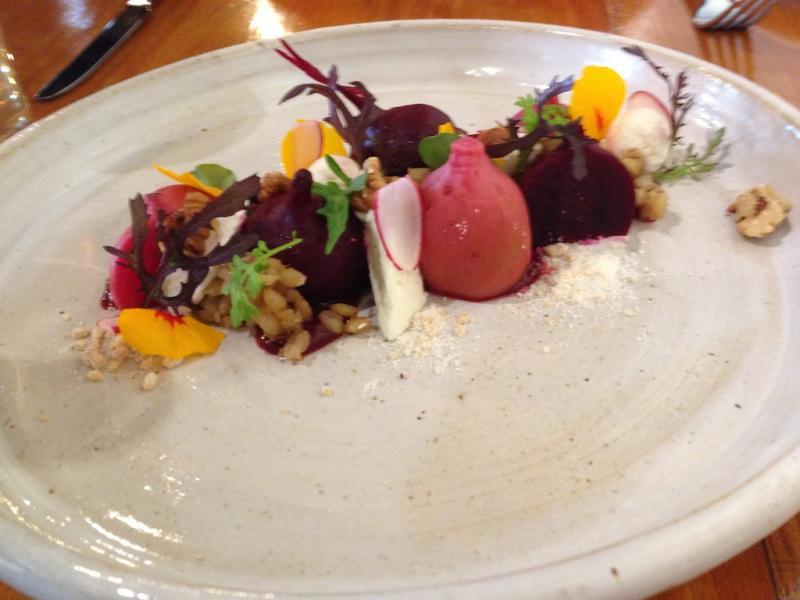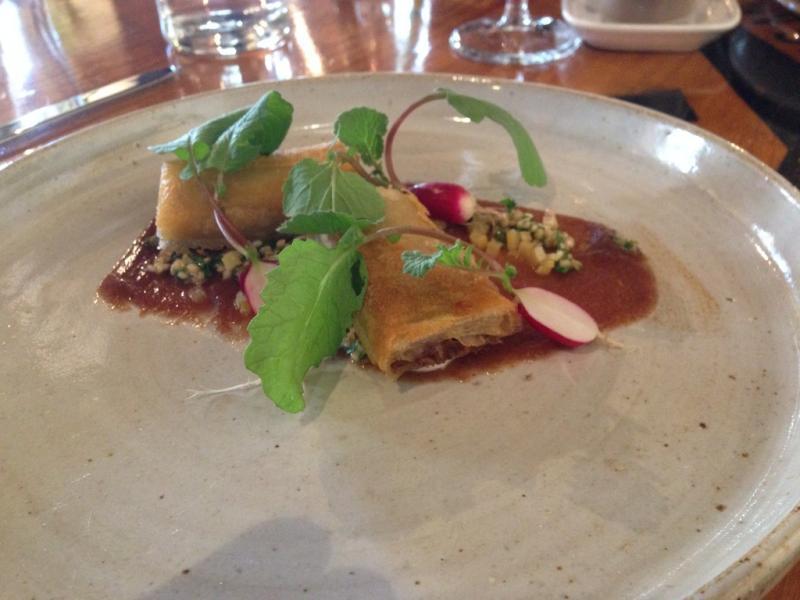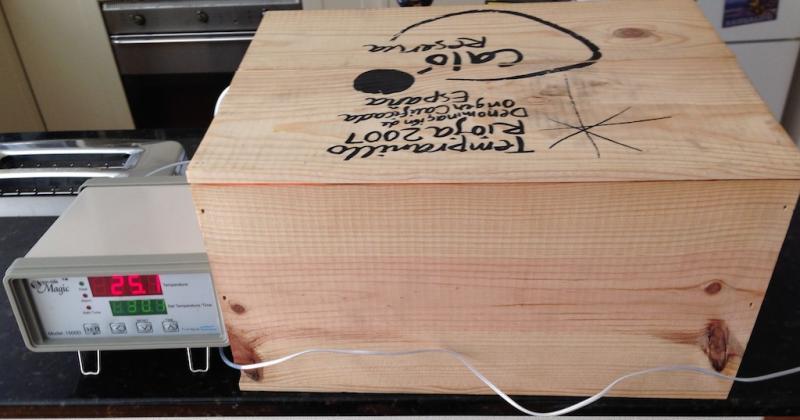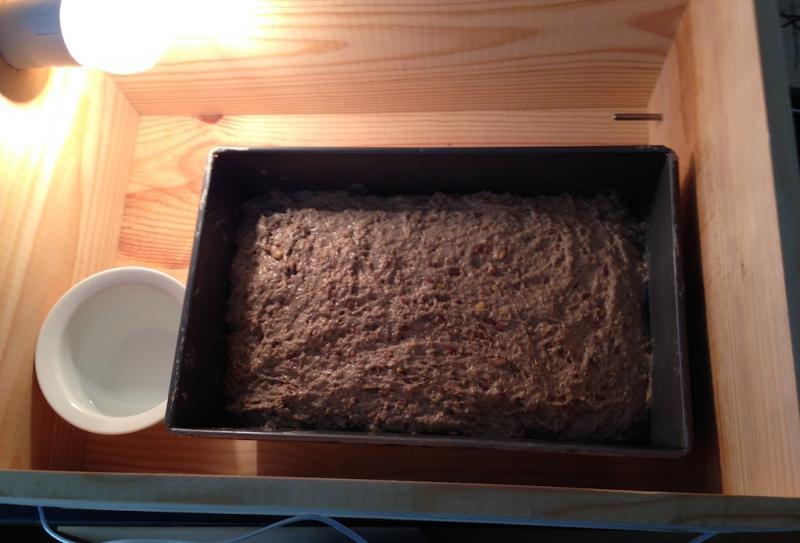-
Posts
2,606 -
Joined
-
Last visited
Content Type
Profiles
Forums
Store
Help Articles
Everything posted by nickrey
-
1. Add powdered dried porcini mushrooms to dishes to up the umami. 2. Squeeze lemon over cooked broccoli for serving. 3. Use Maldon flaked sea salt in homemade butter. This allows you to reduce the overall salt content as the larger crystals and associated salty burst give the impression that there is more salt in there than there is.
-
That's exactly what I meant, thanks Mark.
-
As a pure thought experiment, if the meat is cooked, it will have lost liquid. Liquid is the medium by which marinades, salt, etc move through the meat. My hypothesis would be that the loss of moisture created by cooking would slow down (but not stop) the speed of diffusion. As the diffusion is slower and has not occurred in parallel with cooking, the post cook marinade would most likely take longer. If you left the cooked stew with sous vide meat added in the fridge overnight, the meat should absorb some of the flavouring through diffusion. By doing this for larger quantities, you could then vacuum seal the stew into serving portions and reheat sous vide to ensure that the meat is not over cooked. You could even include freezing in the mix to produce ready to heat frozen meals.
-
Thank you for the link to Watanabe. I got myself one of these. Sin, the owner, is very helpful and fast in supplying postage, etc. The knife has terrific balance and excellent sharpness. Looking forward to using it for many years to come.
-
The use of ice has a bonus which is that the fat sticks to the ice, You can filter the stock by straining it after adding the ice. For my part, I cool the stock relatively gradually and then put it in glass jars. I then can them in a pressure canner which kills any nasties and makes the stock shelf stable.
-
Those examples make it look like something is missing (like a big steak or pile of chips). I looked back over recent meals and realised that a few dishes were plated with blank space. In these, however, it seems that the plate is more a canvas for the meal than a hole that needs to be filled. This type of problem always seems to happen when the less able imitate what has been successfully done by others.
-
Not sure what you mean. The developer licence that has to be agreed on before receiving the hacker special seems very straightforward and clear.
-
Looking forward to seeing what you do with it.
-
If the first try doesn't work, it is not a reason to discard the process.
-
I'd be exploring some other temperatures. 131F (55C) is much lower than the temperature that you would get with frying. I'd probably try 61C (142F). To cook and pasteurise to core would only take 36 minutes (thank you sous vide dash). A much shorter cooking time may decrease the likelihood of off flavours developing.
-
Bactoferm available at this link.
-
Watch out for yoghurt as it often contains a huge amount of sugar. The guidance given above is good. Basically you need to avoid quick-burn carbs which will spike blood sugar (food to avoid include white bread, pasta, white rice [although Basmati is better than other types]; fruit juices; many prepared foods and sauces in the USA, which tend to be loaded with sugar). Instead of mashed potato, try mashed cannellini beans. Chicken is great, but avoid the high sugar content you can get in marinades. Try a Greek marinade that contains salt, lemon, olive oil, garlic, and oregano. The important thing to look at is the glycaemic index (GI). Check out this site for a list of low GI foods that are suitable for diabetics.
-

Finally – they invented a proofing box for the home user
nickrey replied to a topic in Kitchen Consumer
Inspired by this and having a spare sous vide magic, a wine box, and some time, I decided to create a homemade proofing box. Basically it is a wine box that has its interior heated to the proofing temperature by a 40 watt lamp controlled by my sous vide magic. The outside looks like this: Inside there is the light bulb, the dough that is being risen, a container of water to maintain humidity and the sous vide magic temperature probe that fits through a small hole on the side of the box opposite the light bulb. It is a bit slow to reach temperature given the low wattage of the bulb but stays steady as a rock because control is done via a PiD device. -
Real Wasabi by a long stretch. The key flavour components of formulated wasabi are mustard, horseradish, and green food colouring. While real Wasabi is related to horseradish through familial association, which might tempt people to say it is the same, it is also similarly related to cabbage. Real wasabi tastes significantly different from the green paste most people are used to.
-
David Thompson (Nahm) recommends Megachef brand, which is the one that I use. I notice that it can be purchased in the USA now from Amazon. Link here. As an aside, Andrea Nguyen gave their fish sauce a very good review.
-
Because the salt will draw liquid out of the cabbage, it is conceivable that the increase in water level is in reality a decrease in the level of the cabbage. Perhaps this has happened along with evaporation of the water from the seal.
-
Are you making sure that the meat is well chilled when mincing it? Combined with salt as outlined with Shalmanese above will give a good bond. If the meat is too warm when mincing, you can get the same effect as sausages made too hot: the fat doesn't integrate and runs out when cooked, leaving a dry and chewy product.
-
It should go the other way as the fermentation creates excess carbon dioxide that needs to be expelled. Perhaps you should wait a few hours for fermentation to begin before putting water in the moat seal. I've never had this problem with my Harsch. In Australia the main issue is keeping the water topped up to combat it being evaporated over time and the seal failing.
-
You can also soak the white onions in water for around 20 minutes to half an hour (changing water a few times). This leaves a wonderfully crunchy onion without the sting you often find in raw white onion.
-
I've always found that type of texture better for shellfish than melt in the mouth tender. Perhaps that is how it is meant to come out.
-
Are you going to make it an e-book as well? My shelves are so full I prefer to purchase new books in this format.
-
A friend did some for a meal recently he experimented with various temperatures and times as suggested by me and other sources. After an attempt at lower temperatures (57C, 135F) in which the meat didn't cook properly at all, he moved to my suggestion of 72C (162F). He tried a piece after 24 hours and found it too chewy. After 48 hours, the texture was just right. This fits with FeChef's time and temperature profile.
-
It's a method of controlling the protein temperature to achieve the desired outcome. In making Beef Wellington, for example, the problem is cooking the pastry to a golden brown whilst not overcooking the rare beef inside. I've achieved this by cooking the protein to rare sous vide, then searing and freezing the protein. The frozen beef is then wrapped in the pastry (crepes and mushroom) and placed in a hot oven more appropriate to browning the pastry. The pastry is done perfectly and by the time this occurs the beef has defrosted and reheated. Perfect beef and perfect pastry. The same process is also used in certain pies where cooking the pastry properly would overcook the filling. Nathan Myhrvold has demonstrated this technique in his Modernist Cuisine "Cryoburgers."
-
Isn't that called advertising?
-
I'm not sure that any of us recommended keeping the steaks on for hours past doneness. This will turn tender steaks to unpleasant mush.






